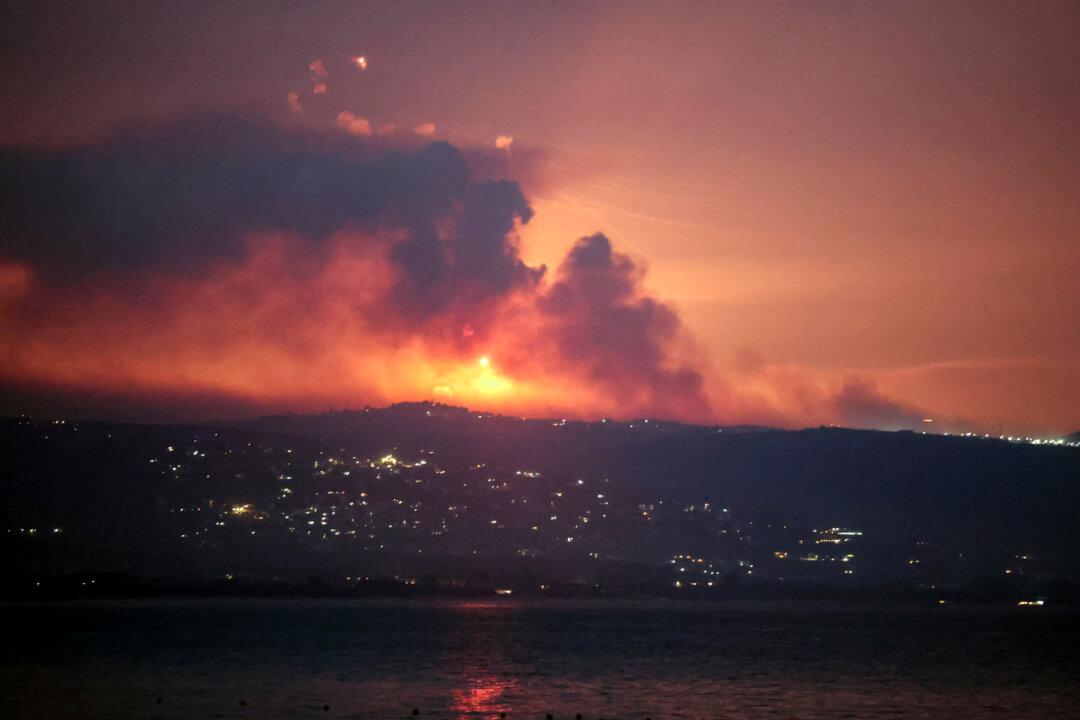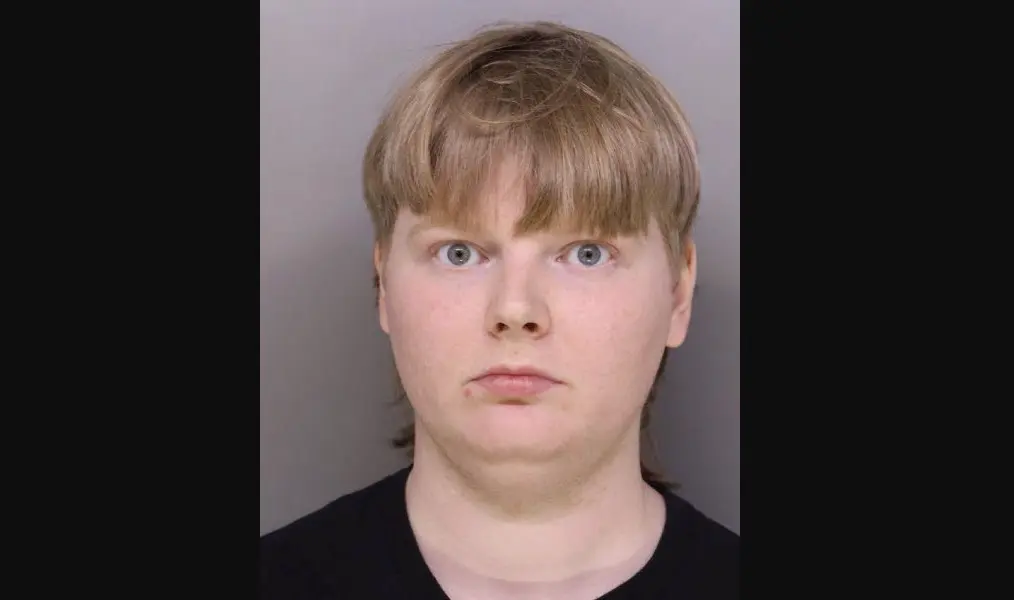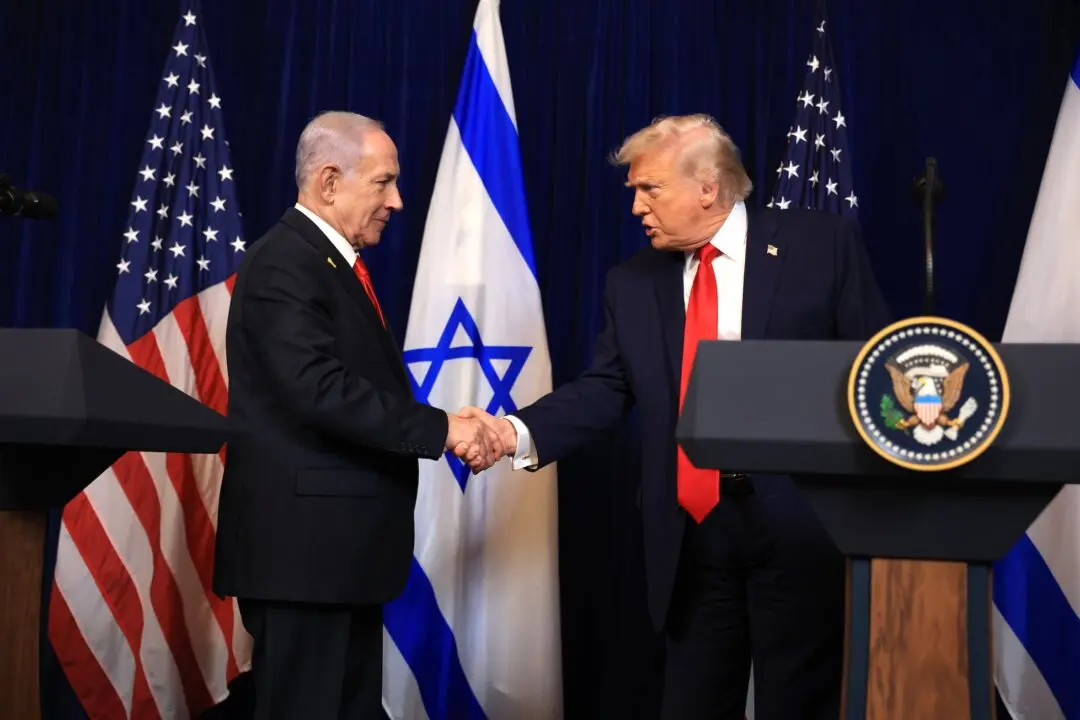The Iran-backed Hezbollah terrorist group launched hundreds of rockets and drones at Israel early on Aug. 25, as Israel’s military stated that it struck Lebanon with about 100 jets to thwart a larger attack.
Footage posted to social media shows Iron Dome missiles intercepting targets coming from Lebanon in Israel’s north. Local media reported rocket sirens across northern Israel, including in Golan Heights’ Katzrin and several Upper Galilee border communities. Drone sirens were also reported sounding in several Galilee towns.





